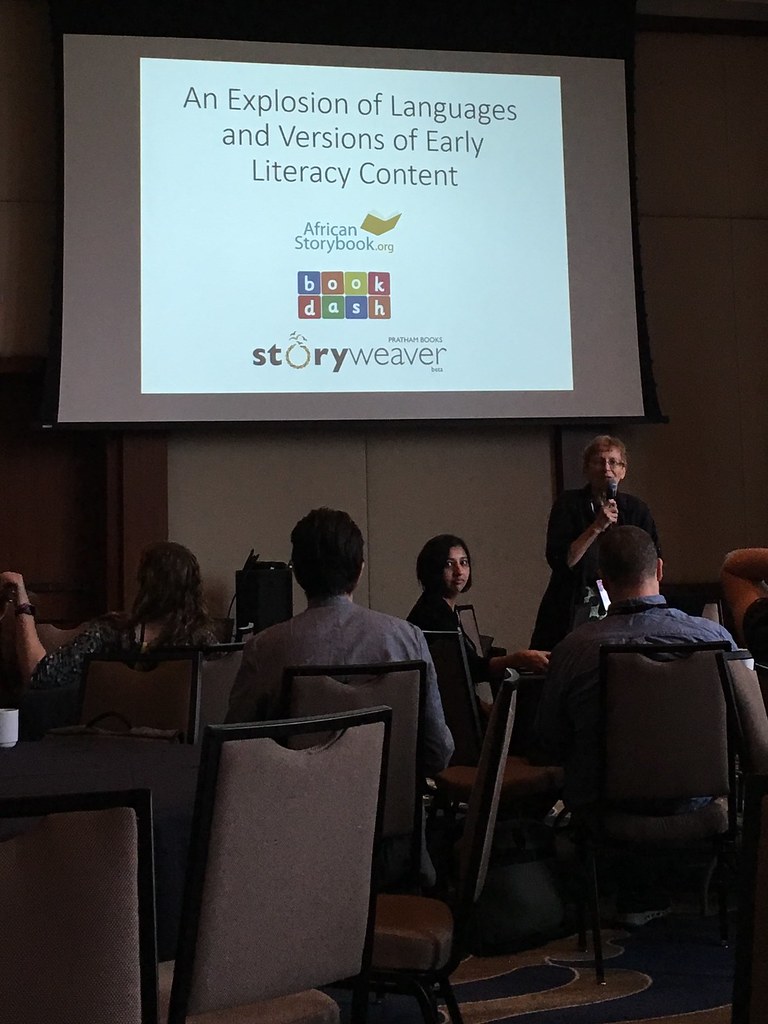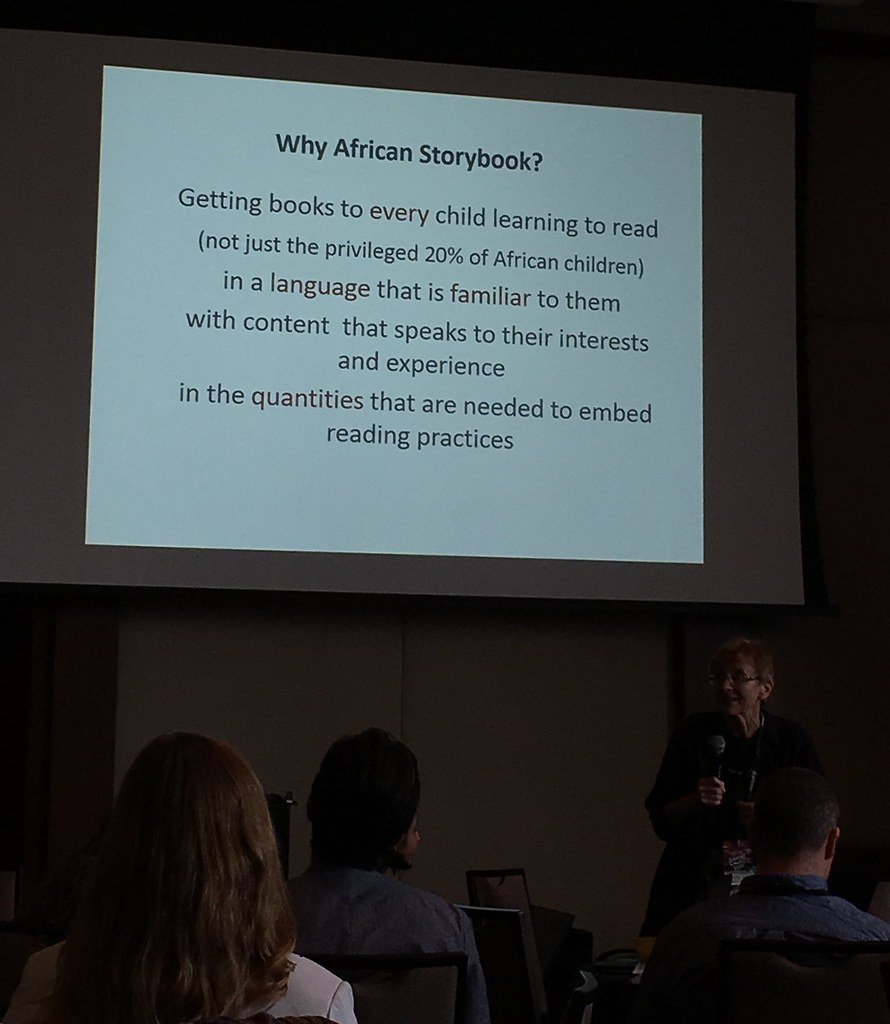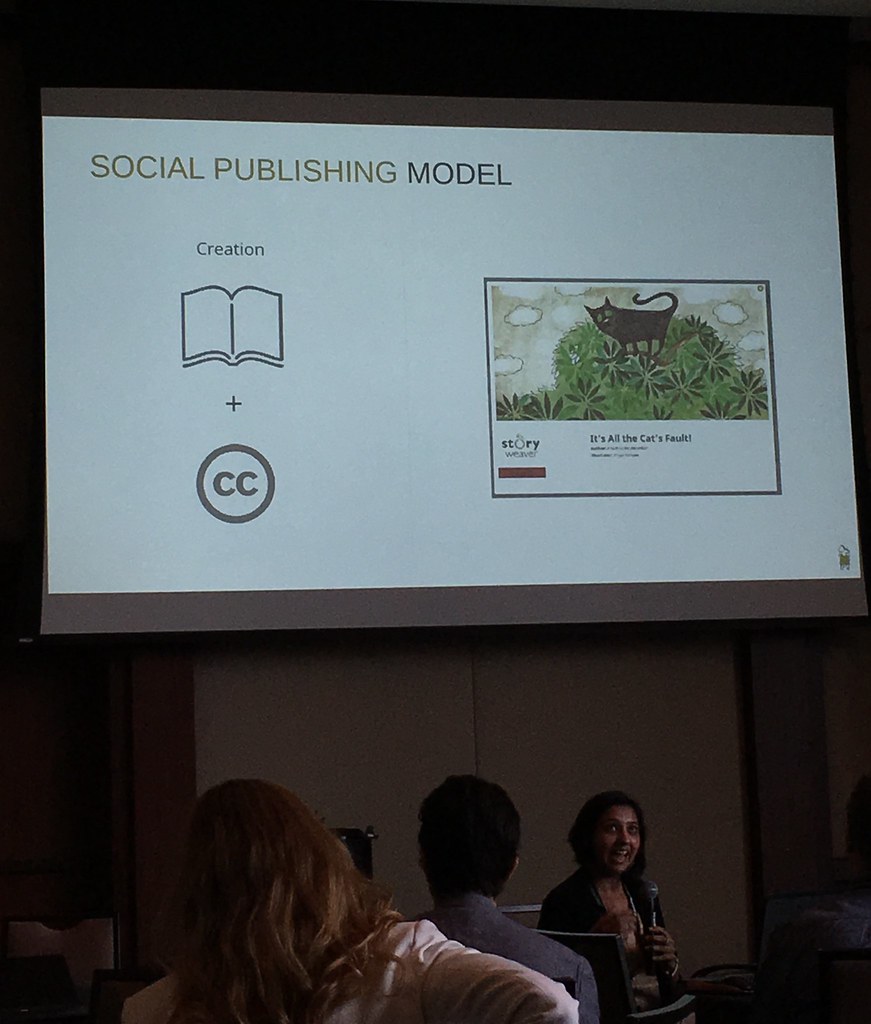What are Open Licenses doing for Early Years Development? 26 Educators, 2 Hours, 1 Platform, 13 Translations.

Early Years Literacy Educators in the African Context take the platform to talk about how open publishing and multi-lingualism opens out opportunities for young readers.
Imagine this. You live in rural Ghana and are born into one of the seventy (plus) distinct language groups. In the rural settings of your family home (or extended family) you learn your precious mother tongue. Now you've learned a few words and naturally the gift your neighbour might bring (if considering this through a typical western lens) is a beautiful picture book with simple words. Not only does this kind gift enable language progression, but also developing the parts of the brain associated with processing images and text together, fuelling imagination, whilst also nurturing the child in cultural values, shared social ethics, and any other themes explored through the context of the book.

But. What if in your part of the world nobody reads books? Because nobody has books? Because the skills of publishing a book aren't part of the community's accessible resources? So. This means your neighbour - or any other member of your local dialect speaking community - can't gift you a book as you start to learn your first precious words.
The potential of open licensed material offers an opportunity to respond to this.
Relying both on the content made available through open publishing (for instance using the cc license approach) AND - importantly - a platform which makes this available material accessible (read also: appropriatable) empowers a decentralised publishing community to create that book, in your own mother tongue, illustrated with images appropriate to your specific cultural community.
How this happens. An author releases a book onto the CC platform. A person or organisation (examples: www.africanstorybook.org; www.storyweaver.org.in) appropriates that resource by making it available to a group of translators who take the text of the book and translate it into a local dialect. Alongside of this, the types of licence used allows the images of the book to be remixed in order to make them to be culturally appropriate. For instance, one remix considered it unhelpful to show only half of the cow within the frame of the image, on the basis that this could lead to a misunderstanding that cows have just two legs! So very quickly, a culturally and socially sensitive piece of literacy, appropriate for a growing toddler in rural Ghana, is released and made available in his or her own mother language. The benefits of this are multiple. Of course in this example the questions remains as to how this new publication and storytelling model fits with and compliments traditions modes of storytelling. The model is of course limited but certainly demonstrates the power of a platform and infrastructure to release the potential of CC licensed material. By the way this also allows for multiple publications in a single language to be validated- validating the potential diversity of interpretations of the CC material (both imaginatively and culturally attributed.) So - that's how in 2 hours, a translation and appropriation in 13 different versions can be successfully achieved.

This illustrates the importance of both the availability of material (digital, in terms of the CC community) AND the means to harness, distribute, and enjoy the potential uses of said resource.
This example of early years publishing demonstrates the explosive results achieved when the conditions come together to create open and accessible resources: the simple and accessible infrastructure (eg. The StoryWeaver online platform) AND a willing and passionate network of 'appropriators' (read: publishers, translators, illustrators - all of whom can happily be untrained but able individuals). This illustrates the innovation and creativity of CC 'entrepreneurs' who are harvesting the potential of the CC licence by producing the complementary infrastructure- both in digital platform and people power- to respond to specific socio-cultural issues and making the CC material usable.
Release. Remix. Repeat.
And the story goes on.

Jessica Rees is studying for a Masters in Architecture. Jess is focusing on the ‘Policy and Advocacy’ track at the CC Summit. She is interested in the potential CC provides as a platform to bring diverse people and fields of knowledge together to work towards building a fairer society.

